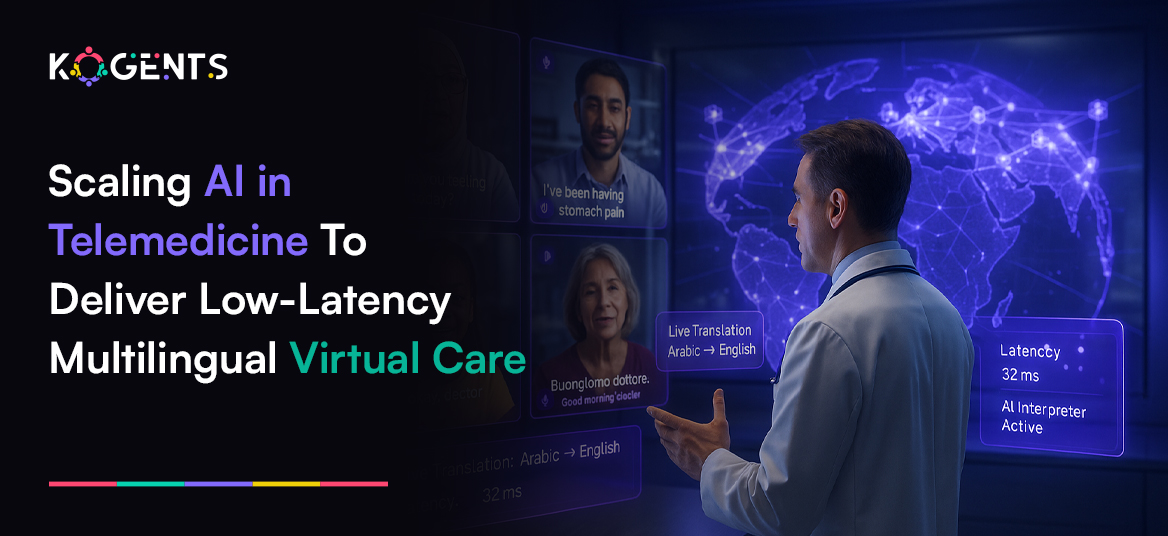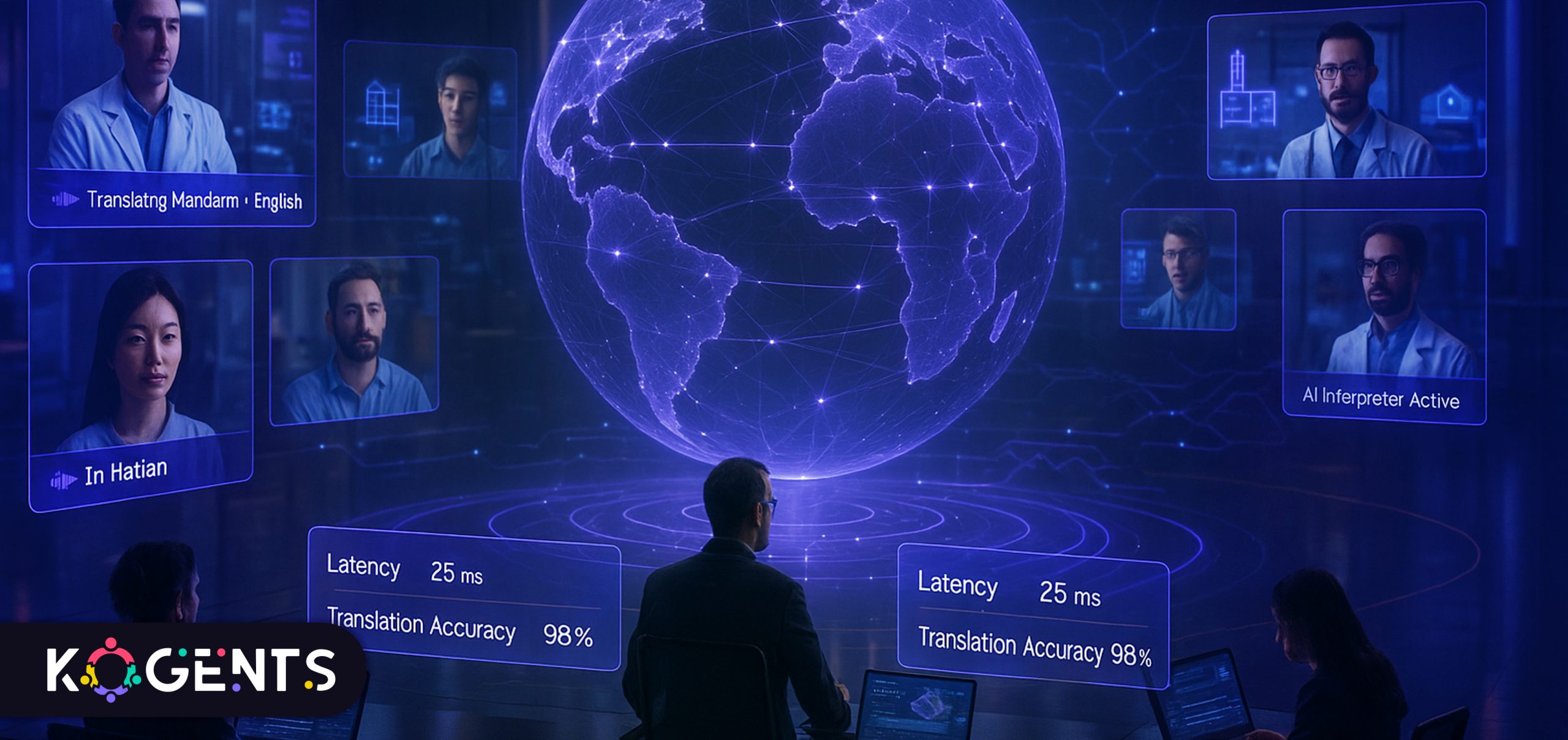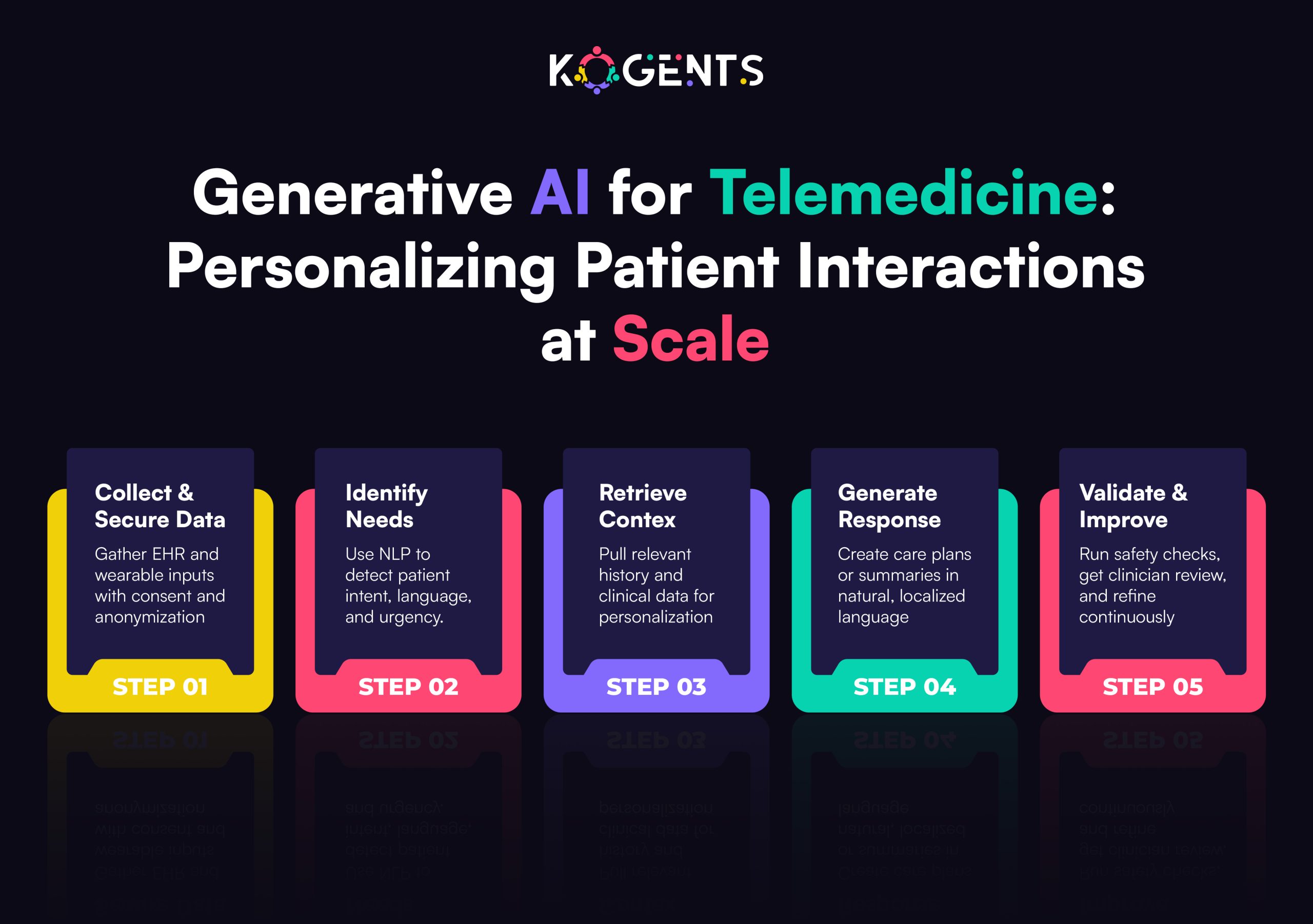Scaling AI in Telemedicine To Deliver Low-Latency Multilingual Virtual Care

Summary:
Telemedicine has evolved from a convenience into a lifeline. The pandemic accelerated its adoption, but scaling AI in telemedicine is what’s propelling it into the future.
From a patient in Nairobi connecting with a cardiologist in London to a speech-to-speech translated consultation in Tokyo, we’re witnessing the dawn of low-latency multilingual virtual care.
Yet, this promise comes with complexity: connectivity constraints, linguistic diversity, and the demand for real-time diagnostic precision.
Traditional systems strain under these expectations. The new wave of AI-powered telemedicine platforms, however, fuses natural language processing (NLP), computer vision, and predictive analytics to deliver intelligent care experiences, instantly and inclusively.
This article explores how entrepreneurs and solopreneurs can leverage artificial intelligence in telemedicine to scale global healthcare access.
We’ll cover real-world case studies, implementation frameworks, ROI insights, ethical design, and a glimpse into what the future of AI agents will mean for healthcare and digital entrepreneurship.
Key Takeaways
- AI in telemedicine delivers faster, multilingual, and equitable care.
- Entrepreneurs can scale globally through cloud-edge hybrid platforms.
- Ethical design, bias checks, transparency, and compliance are non-negotiable.
- AI agents will soon handle triage, translation, and analytics in real time.
- Market size > $50 B by 2030 means a massive entrepreneurial opportunity.
- Human oversight + AI automation = sustainable, trusted telehealth.
Why Low-Latency Multilingual Telemedicine Matters?
Imagine a stroke patient in a rural clinic needing emergency assessment, and this way every second matters. The latency between patient data capture and physician response can determine survival.
That’s where AI in telehealth transforms outcomes: edge-optimized algorithms analyze signals locally before syncing with the cloud, cutting response times from 10 seconds to under one.
Simultaneously, multilingual NLP models remove the linguistic bottleneck.
For global entrepreneurs and solopreneurs, that means entering new markets without building multilingual teams.
These technologies aren’t just convenience tools; they redefine inclusion.
Patients with limited literacy, dialectal differences, or accessibility challenges finally receive equitable care.
Clinics and digital-health startups can expand from local to continental reach, creating a borderless healthcare ecosystem.

Case Study Spotlight: Real-World Innovation at Scale
1. Qure.ai — Deep Learning in Telemedicine for Imaging
Qure.ai applies convolutional neural networks (CNNs) to interpret chest X-rays and CT scans within 60 seconds.
Deployed in over 70 countries, it assists radiologists, or substitutes for them, where human expertise is scarce.
Outcome: Diagnostic turnaround time fell by 50%; rural clinics in Kenya and Bangladesh now process thousands of scans daily.
2. Cedars-Sinai Virtual Care — Real-Time Multilingual AI
Cedars-Sinai implemented AI telemedicine translation that detects tone and emotion while transcribing multilingual dialogue.
Edge computing ensures a < 1-second response time.
Outcome: Patient satisfaction rose 38%, with improved engagement in Spanish and Mandarin consultations.
3. Solo Digital Therapist — Automation for Solopreneurs
A European therapist automated client intake, symptom tracking, and reminders using predictive analytics in remote healthcare.
Outcome: Saved 15 hours per week, reduced no-shows by 25%, and expanded service from English to five languages.
These cases prove that AI-powered telemedicine doesn’t require enterprise infrastructure, just strategic deployment and start small, localize data, and scale ethically.
Challenges & Ethical Considerations
Before scaling, innovators must address the three pillars of responsible AI in telemedicine: trust, transparency, and compliance.
1. Data Privacy & Security
- Telemedicine platforms process sensitive health data governed by HIPAA, GDPR, and regional frameworks.
- Entrepreneurs must ensure encryption, anonymization, and data residency compliance.
- Using FHIR-based APIs simplifies secure interoperability between systems.
2. Bias & Fairness
- Algorithms trained on non-representative datasets risk misdiagnosis for underserved populations.
- The FDA and CE regulators now demand bias testing and model explainability.
- Solopreneurs can mitigate risk by leveraging open datasets like NIH ChestX-ray14 and synthetic augmentation for inclusivity.
3. Algorithmic Accountability
- AI models drift over time.
- Continuous validation, clinician-in-the-loop review, and audit trails ensure sustained accuracy.
- Tools like Explainable AI (XAI) frameworks from Google or Microsoft enhance transparency.
4. Ethical Translation & Accessibility
- Multilingual NLP must preserve clinical nuance.
- Mis-translation of dosage or symptom severity can be fatal.
- That’s why AI telemedicine translation engines must undergo medical domain fine-tuning and human verification loops.
Pro Tip: Always pair automation with oversight, and AI should assist, not replace physicians, keeping the human at the center of care.
Market Trends & Business Opportunities
Growth drivers include:
- Rising Chronic Disease Burden: Remote patient monitoring (RPM) powered by machine learning in telemedicine allows continuous heart-rate and glucose tracking, alerting clinicians instantly.
- Expansion of IoMT (Internet of Medical Things): Wearable sensors stream data into AI dashboards that detect anomalies, enabling preventive action.
- Regulatory Enablement: Governments now reimburse AI-based teleconsultations; the Centers for Medicare & Medicaid Services (CMS) updated telehealth billing codes in 2024.
- Corporate Adoption: Giants like Philips HealthSuite and GE Healthcare integrate clinical AI agents in decision support modules across hospitals globally.
Entrepreneurial Openings
- Tele-ICU analytics startups offering predictive deterioration alerts.
- AI-triage APIs for integration into EHR systems.
- Virtual mental-health bots offering multilingual therapy at scale.
- White-label AI telemedicine platforms for clinics entering emerging markets.
Implementation Framework: Building Scalable AI Telemedicine
A structured rollout ensures sustainability and compliance.
Step 1: Define the Problem Space
- Focus narrowly, chronic disease management, triage, or imaging.
- Each requires different data modalities (signal, text, image).
Step 2: Choose the Tech Stack
- Opt for a hybrid architecture, cloud for heavy compute, edge for low latency.
- Platforms like AWS HealthLake, Azure Health Data Services, or Google Healthcare API provide compliant foundations.
Step 3: Data Interoperability
- Adopt HL7 FHIR standards.
- Connect with wearable data streams or hospital EHRs securely.
Step 4: Train and Validate
Use annotated datasets, peer-reviewed methodologies, and publish validation metrics.
Step 5: Deployment & Feedback
- Embed telemedicine and anomaly detection to catch errors early.
- Employ CI/CD pipelines for continuous learning.
Step 6: Localization
Incorporate telemedicine and NLP adaptation, tuning translation models for dialectal and cultural nuance.
Pro Tip: Launch an MVP targeting one demographic and one language and validate latency (< 1s), translation accuracy, and satisfaction before scaling.
ROI & Impact for Entrepreneurs and Solopreneurs
The economics of AI-enabled telemedicine are compelling:
| Metric | AI-Augmented Outcome |
| Operational cost reduction | –60 % (automation of triage & charting) |
| Patient throughput | +3× with identical staff |
| Documentation time | –70 % via speech-to-text NLP |
| Patient satisfaction | +30 % with personalized engagement |
| Translation overhead | Eliminated through real-time AI |
- Solo founders save an average of 10–15 hours weekly; mid-size clinics reduce administrative headcount by 20%.
- Beyond financial ROI lies brand equity, trust from patients experiencing friction-free, culturally attuned care.
- As reimbursement frameworks evolve, expect insurers to reward AI telehealth efficiencies, turning compliance into revenue.
Future of AI Agents in Telemedicine
Let’s look ahead, where AI agents for healthcare automation develop from assistants to autonomous collaborators.
1. Context-Aware Virtual Clinicians
- Future agents will fuse multimodal intelligence, text, speech, video, and sensor data to form a holistic AI patient scheduling and understanding.
- Imagine an AI that correlates cough sound with chest-image analysis to propose differential diagnoses instantly.
2. Continual Learning & Federated Models
- Instead of centralizing sensitive data, federated learning will let telemedicine systems learn across hospitals while preserving privacy.
- This dramatically accelerates innovation without breaching compliance.
3. Hyper-Personalized Multilingual Interfaces
AI will adapt not just to languages but to cultural empathy markers, intonation, idioms, and sentiment, making care feel human even through a screen.
4. Predictive Population Health
National networks could aggregate de-identified data for predictive analytics in remote healthcare, flagging outbreaks or chronic disease clusters early, and real-time epidemiology powered by AI.
5. Human Plus AI Collaboration
- Physicians will supervise fleets of digital co-workers handling admin, translation, and routine triage, while focusing on critical care and empathy, the elements machines can’t replicate.
‘’As Eric Topol and Fei-Fei Li often note, the goal is not machine medicine but augmented humanity. ‘’
The next decade will see AI-driven telehealth solutions acting as partners that extend human reach, reduce burnout, and universalize healthcare access.

Conclusion
We stand at the inflection point of healthcare’s digital transformation. AI in telemedicine now unites speed, empathy, and intelligence, translating across languages, predicting crises before they occur, and democratizing expertise across continents.
For entrepreneurs and solopreneurs, this isn’t just a technical revolution; it’s a moral and commercial mandate.
Those who build AI-powered telemedicine platforms grounded in transparency and inclusivity will define the next decade of digital health leadership.
So, are you ready to build the future? If yes, then see how Kogents.ai empowers innovators to deploy low-latency multilingual AI telehealth systems.
For further assistance, give us a call at +1 (267) 248-9454 or drop an email at info@kogents.ai.
FAQs
What is AI in telemedicine?
AI in telemedicine refers to using artificial intelligence technologies, like machine learning, NLP, and computer vision, to enhance virtual healthcare. It powers diagnostics, real-time translation, remote monitoring, and predictive decision support for clinicians and patients.
How does AI improve low-latency telemedicine?
By leveraging edge computing and optimized neural networks, AI processes patient data near the source, reducing cloud dependency and network delays. This enables sub-second response times during live consultations, especially in multilingual settings.
What are the benefits of multilingual AI telehealth systems?
They eliminate language barriers through real-time medical translation, increase accessibility across diverse regions, and improve accuracy by contextualizing cultural nuances, all crucial for equitable global healthcare delivery.
Are AI-powered telemedicine platforms secure and compliant?
Yes, modern systems adhere to HIPAA, GDPR, and FDA or CE regulatory frameworks. Data encryption, anonymization, and FHIR interoperability maintain privacy and compliance throughout care delivery.
What challenges exist in adopting AI in telehealth?
Key challenges include data bias, a lack of diverse training datasets, ethical translation issues, and maintaining explainable AI. Entrepreneurs must design with transparency and validation to earn patient and regulatory trust.
How can solopreneurs leverage AI in telemedicine?
Solopreneurs can automate intake, triage, and follow-ups using AI-driven virtual care tools. These solutions cut administrative workload by 40–60%, enabling one-person practices to operate like scaled digital clinics.
What’s the future of AI agents in telemedicine?
Future AI agents will integrate multimodal intelligence—text, voice, and vision—to deliver hyper-personalized care. Through federated learning and continual updates, they’ll act as co-clinicians providing real-time insight while ensuring human oversight.
How can entrepreneurs start building an AI telemedicine solution?
Start with a narrow use case (like triage or RPM), use cloud-edge hybrid architecture, ensure data interoperability via HL7/FHIR, and validate models with clinical experts. Platforms such as Kogents.ai offer tools to accelerate compliant deployment.
What is the ROI of adopting AI in telehealth?
Hospitals and solo providers typically achieve 3× patient throughput, 60% lower operational costs, and 30% higher patient satisfaction. AI’s automation of documentation and translation drives both revenue and retention.
How does AI ensure equitable healthcare access globally?
AI democratizes access by providing real-time, multilingual teleconsultation in underserved areas, empowering clinicians to reach patients across language, geography, and socioeconomic barriers.
What regulations govern AI in telemedicine?
The American Telemedicine Association (ATA), FDA, European CE Mark, and WHO digital-health guidelines all define compliance frameworks for safe, ethical, explainable AI deployment in healthcare.
FAQs
AI in telemedicine refers to using artificial intelligence technologies, like machine learning, NLP, and computer vision, to enhance virtual healthcare. It powers diagnostics, real-time translation, remote monitoring, and predictive decision support for clinicians and patients.
By leveraging edge computing and optimized neural networks, AI processes patient data near the source, reducing cloud dependency and network delays. This enables sub-second response times during live consultations, especially in multilingual settings.
They eliminate language barriers through real-time medical translation, increase accessibility across diverse regions, and improve accuracy by contextualizing cultural nuances, all crucial for equitable global healthcare delivery.
Yes, modern systems adhere to HIPAA, GDPR, and FDA or CE regulatory frameworks. Data encryption, anonymization, and FHIR interoperability maintain privacy and compliance throughout care delivery.
Key challenges include data bias, a lack of diverse training datasets, ethical translation issues, and maintaining explainable AI. Entrepreneurs must design with transparency and validation to earn patient and regulatory trust.
Solopreneurs can automate intake, triage, and follow-ups using AI-driven virtual care tools. These solutions cut administrative workload by 40–60%, enabling one-person practices to operate like scaled digital clinics.
Future AI agents will integrate multimodal intelligence—text, voice, and vision—to deliver hyper-personalized care. Through federated learning and continual updates, they’ll act as co-clinicians providing real-time insight while ensuring human oversight.
Start with a narrow use case (like triage or RPM), use cloud-edge hybrid architecture, ensure data interoperability via HL7/FHIR, and validate models with clinical experts. Platforms such as Kogents.ai offer tools to accelerate compliant deployment.
Hospitals and solo providers typically achieve 3× patient throughput, 60% lower operational costs, and 30% higher patient satisfaction. AI’s automation of documentation and translation drives both revenue and retention.
AI democratizes access by providing real-time, multilingual teleconsultation in underserved areas, empowering clinicians to reach patients across language, geography, and socioeconomic barriers.
The American Telemedicine Association (ATA), FDA, European CE Mark, and WHO digital-health guidelines all define compliance frameworks for safe, ethical, explainable AI deployment in healthcare.

Kogents AI builds intelligent agents for healthcare, education, and enterprises, delivering secure, scalable solutions that streamline workflows and boost efficiency.